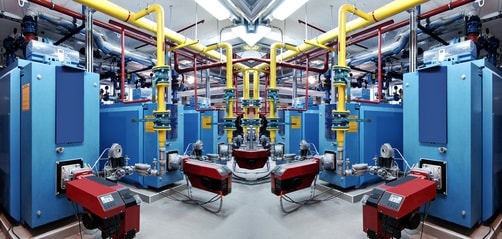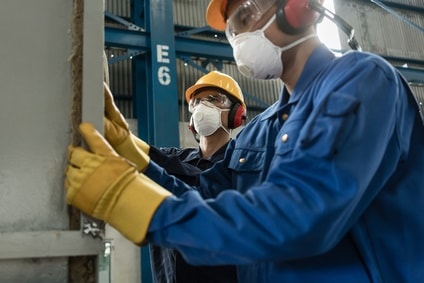A high-pressure boiler is defined as a boiler in which steam or vapor is generated at a pressure equal to or greater than 15 psig, or a boiler in which water is heated at a temperature of 250°F and a pressure greater than 160 psig, when water is heated for use external to the boiler itself. High-pressure boilers include electric boilers, miniature boilers, and high-temperature boilers for water and other liquids.

Boilers are typically subject to routine inspections annually, although more frequent inspections may be necessary if performance malfunctions are identified, for older systems, or in certain areas based on state or local regulations. Regular inspections are imperative for minimizing downtime due to unexpected malfunctions and ensuring that boilers are in good working order.
But what does a high-pressure boiler inspection involve? Here’s a look at the key steps in conducting an inspection on a high-pressure boiler. Download our high-pressure boiler inspection checklist for an interactive guide you can follow step-by-step, or continue reading for information on:
The boiler’s user or owner is responsible for preparing a boiler for inspection, as well as preparing and performing a hydrostatic or pressure test when necessary. The inspector should notify the owner or user of the date of inspection at least seven days in advance, or according to the notice requirements outlined in applicable state or local regulations.
Pressure boilers are covered under Section VIII of the ASME (American Society of Mechanical Engineers) “Boiler and Pressure Vessel Code.” State and local regulations may also apply, so owners and users of high-pressure vessels should familiarize themselves with all applicable standards and regulations. Additionally, inspectors should assess high-pressure boilers against all applicable regulations and standards, so the specific inspection steps may vary between locations subject to different regulatory guidelines.
To prepare a boiler for inspection, the user or owner should take the following steps, as required by the inspector:
Hydrostatic pressure tests should not exceed 1.5 times the maximum allowable working pressure, or other limits as defined by applicable state or local regulations. The test should be controlled to ensure that the required test pressure is never exceeded by two percent (2%) or more. The water used to perform a hydrostatic test should be at least 70 degrees Fahrenheit but no more than 120 degrees Fahrenheit. When hydrostatic tests are used to determine tightness, the pressure should equal the normal operating pressure but not exceed the release pressure of the safety valve with the lowest release setting.
The boiler manufacturer’s cool down procedure should always be followed when preparing a boiler for inspection. After cool-down, the boiler should be rinsed to avoid sludge deposits that can create problems later. If a cooled-down boiler will be filled with water for an extended period, the appropriate wet lay-up precautions should be taken to avoid corrosion.

Anything small enough to fall down a tube should be removed prior to entering a boiler. That includes watches, earrings, rings, and other items. Recommended equipment for performing high-pressure boiler inspections includes:
In addition to having the appropriate safety gear mentioned above, inspectors (as well as owners and users preparing boilers for inspection) should follow all plant safety procedures. Other safety recommendations include:
Inspectors should always review past inspection reports and any design documents available for the high-pressure boiler prior to initiating an inspection. An inspection includes a thorough examination and analysis of both waterside and fireside surfaces, and inspections may also include economizers, feedwater heaters, deaerators, and other related equipment.
Inspectors look for evidence of corrosion, leaks and cracks, deposits and plugging, and any other damage, taking photos of all damage and potential concerns and also discussing all concerns in the written report. Inspectors also verify the functional efficacy of operational and safety controls.
Download our interactive checklist for a step-by-step guide to high-pressure boiler inspection procedures.
Our sales engineers are experts in automatic asset tracking, tagging and identification,a nd can answer all your questions. Get in touch now.
Lets Talk ›